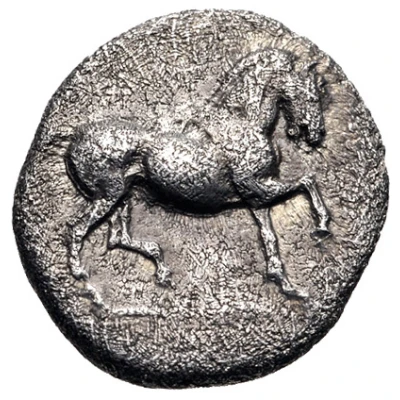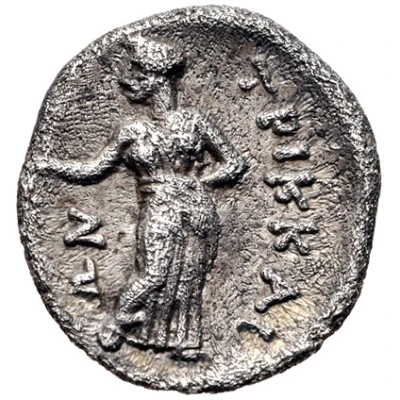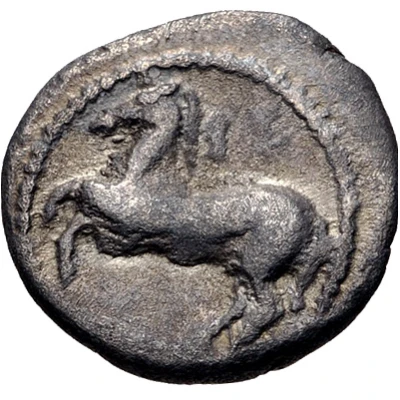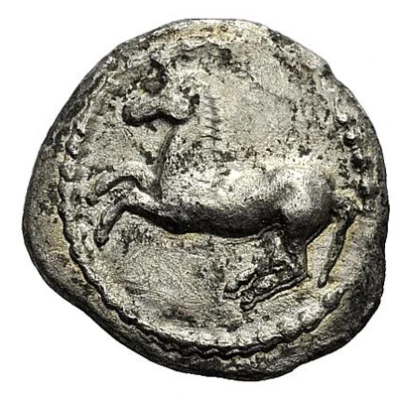


© Classical Numismatic Group, Inc.
Obol 440 BC - 400 BC
| Silver | 0.86 g | 11.0 mm |
| Issuer | Trikka (Thessaly) |
|---|---|
| Type | Standard circulation coin |
| Years | 440 BC - 400 BC |
| Value | Obol (⅙) |
| Currency | Drachm |
| Composition | Silver |
| Weight | 0.86 g |
| Diameter | 11.0 mm |
| Shape | Round (irregular) |
| Technique | Hammered, Incuse |
| Demonetized | Yes |
| Updated | 2024-10-10 |
| Numista | N#145632 |
|---|---|
| Rarity index | 97% |
Reverse
The nymph Trikke standing facing, head left, bouncing a ball with her right hand, left hand on her hip. All within shallow circular incuse
Script: Greek
Lettering:
ΤΡΙΚΚΑΙ
ΩΝ
Comment
Traité IV, 555 and pl. CCXCII, 5.
Interesting fact
The Obol coin was used as a form of currency in ancient Greece, specifically in the city-state of Trikka (now known as Trikala) in Thessaly. The coin features the image of a mythical creature called the "Triton," which is a half-human, half-fish creature that was believed to inhabit the sea. The Triton was considered a symbol of the city's connection to the sea and its maritime trade. The Obol coin was used for everyday transactions and was also offered to the gods as an offering.



